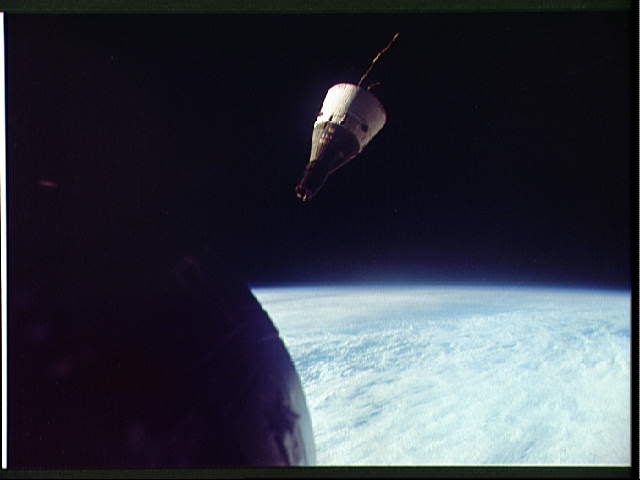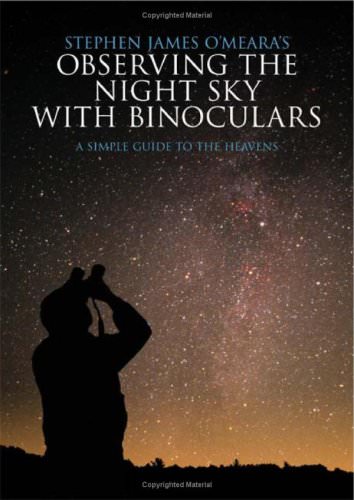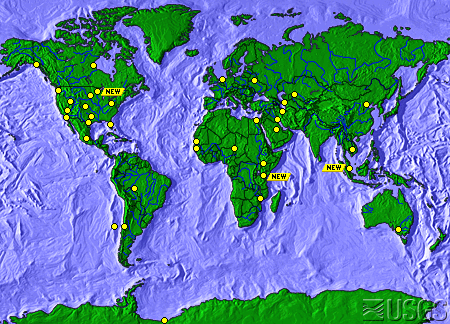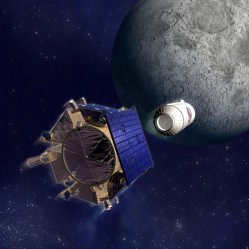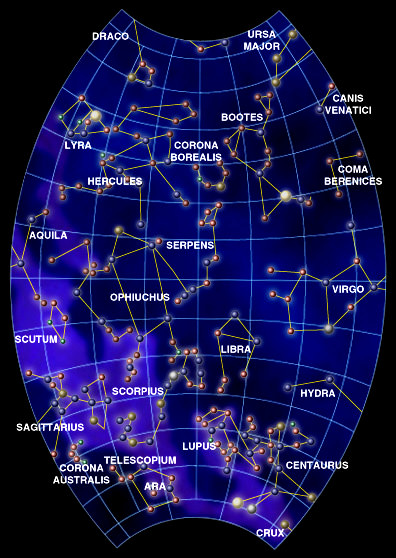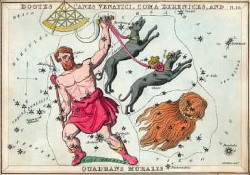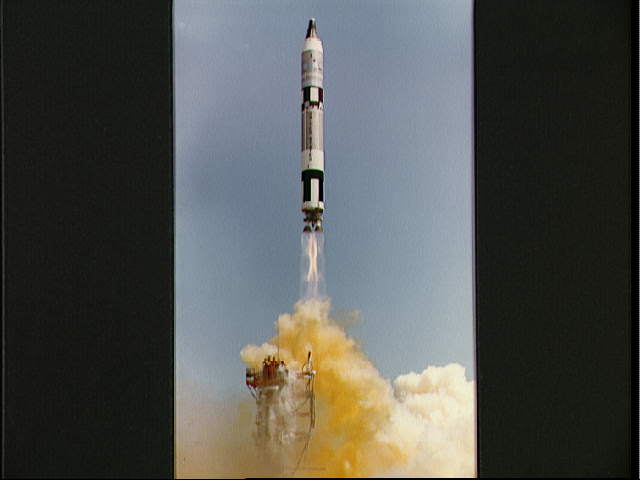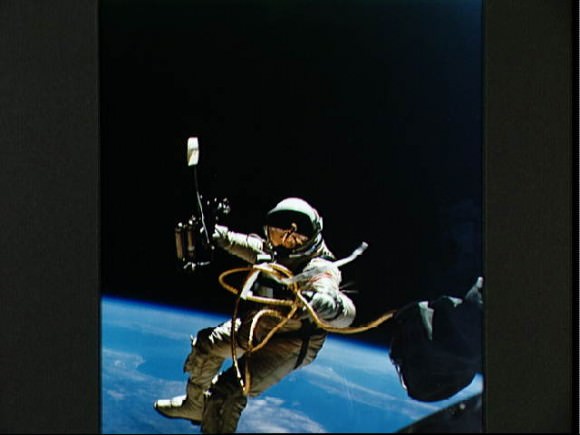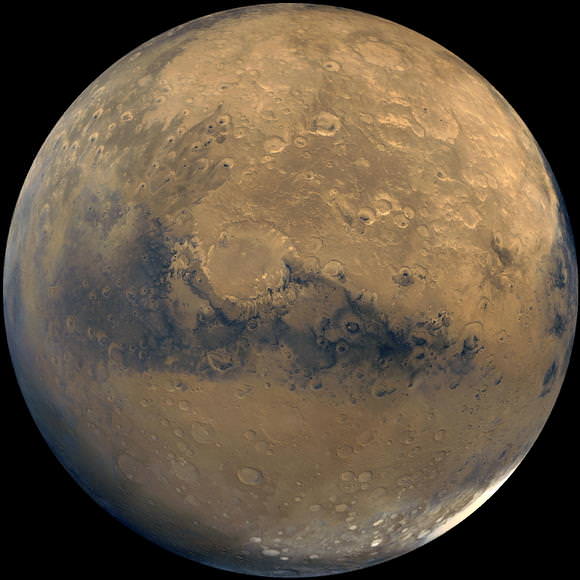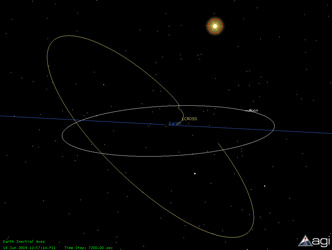[/caption]
Gemini VI ended up launching after Gemini VII, making it the fifth manned mission of Project Gemini. The astronauts on board were Walter M. Schirra Jr., Commander and Thomas P. Stafford, Pilot.
The mission launched on Dec. 15, 1965 at 8:37 am EST, and the two-man capsule reached at altitude of 311.3km. The crew made 16 orbits and their flight lasted 1 Day, 1 hour, 51 min, 24 seconds.
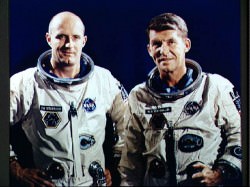
The original flight plan called for the Gemini VI to rendezvous with an Agena target vehicle in space to test out rendezvous and docking procedures. However the Agena launched on October 25 blew up on the way to orbit. After much discussion, NASA decided to launch Gemini VII first and have Gemini VI rendezvous the Gemini VII spacecraft. This required a quick one week turnaround of the launch pad, something NASA had never done before.
Gemini VII launched on Dec. 4, 1965 but the first launch attempt for Gemini VI on Dec. 12 was aborted, as the Titan II rocket ignited and then shut down a second later. As commander, Schirra had the option of ejecting the crew to safety, but he waited it out and did not pull the abort handles. That decision allowed a quick second launch attempt on Dec. 15 that went perfectly.
The primary objective was to rendezvous with Gemini-VII, which was accomplished successfully, making it the first manned rendezvous controlled entirely by the self-contained, on-board guidance, control, and navigation system. This system provided the crew of Gemini 6 with attitude, thrusting, and time information needed for them to control the spacecraft during the rendezvous. The two spacecraft came within 16 meters.
Secondary objectives were to stationkeep with Gemini VII, conduct visibility tests for rendezvous and evaluate reentry guidance capability. The crew had three planned experiments, but the Radiation in Spacecraft experiment was unable to be done because stationkeeping with Gemini VII interfered with it.
Gemini VI splashed down on December 16, 1965, landing at 23 degrees 35 minutes North and 67 degrees 50 minutes West, missing its target landing location by only 12.9 km. The crew was recovered by the USS Wasp, which had the crew onboard in 66 minutes.
NASA’s Gemini VI history page.
More images from Gemini VI.

